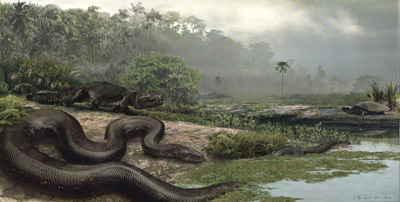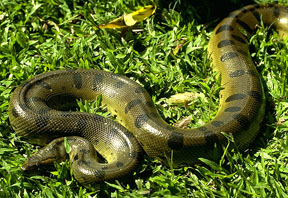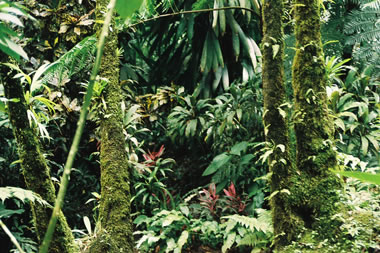Click on image for full size
Courtesy of Jason Bourque, University of Florida
Prehistoric Fossil Snake is Largest on Record
News story originally written on February 4, 2009
Today, the South American jungle is home to many snakes. But 60 million years ago it was home to much larger snakes.
Scientists have discovered the fossils of a snake that was longer than a school bus. They estimate that it weighed 1140 kilograms (2500 pounds). This snake was a constrictor, meaning it wrapped around its prey before eating it. The snake was so big that, if it were alive today and slithered past an adult human, its body would come up to about the person’s hips.
"The size is pretty amazing,” said geologist David Polly, one of the people who discovered the snake. “We went a step further and asked, how warm would the Earth have to be to support a body of this size?"
The fossils were found in a coal mine in northern Colombia. Scientists Carlos Jaramillo and Jonathan Bloch looked for geologic clues to what the climate and environment were like. They discovered that the area was a tropical rainforest.
"Tropical ecosystems of South America were surprisingly different 60 million years ago," said Bloch. "It was a rainforest, like today, but it was even hotter and the cold-blooded reptiles were substantially larger. The result was, among other things, the largest snakes the world has ever seen."
A warmer climate leads to larger cold-blooded creatures. The scientists say that this fossil snake’s size means that the average annual temperature was warmer - five degrees Celsius warmer than the upper temperature limit for tropical rainforests today.















